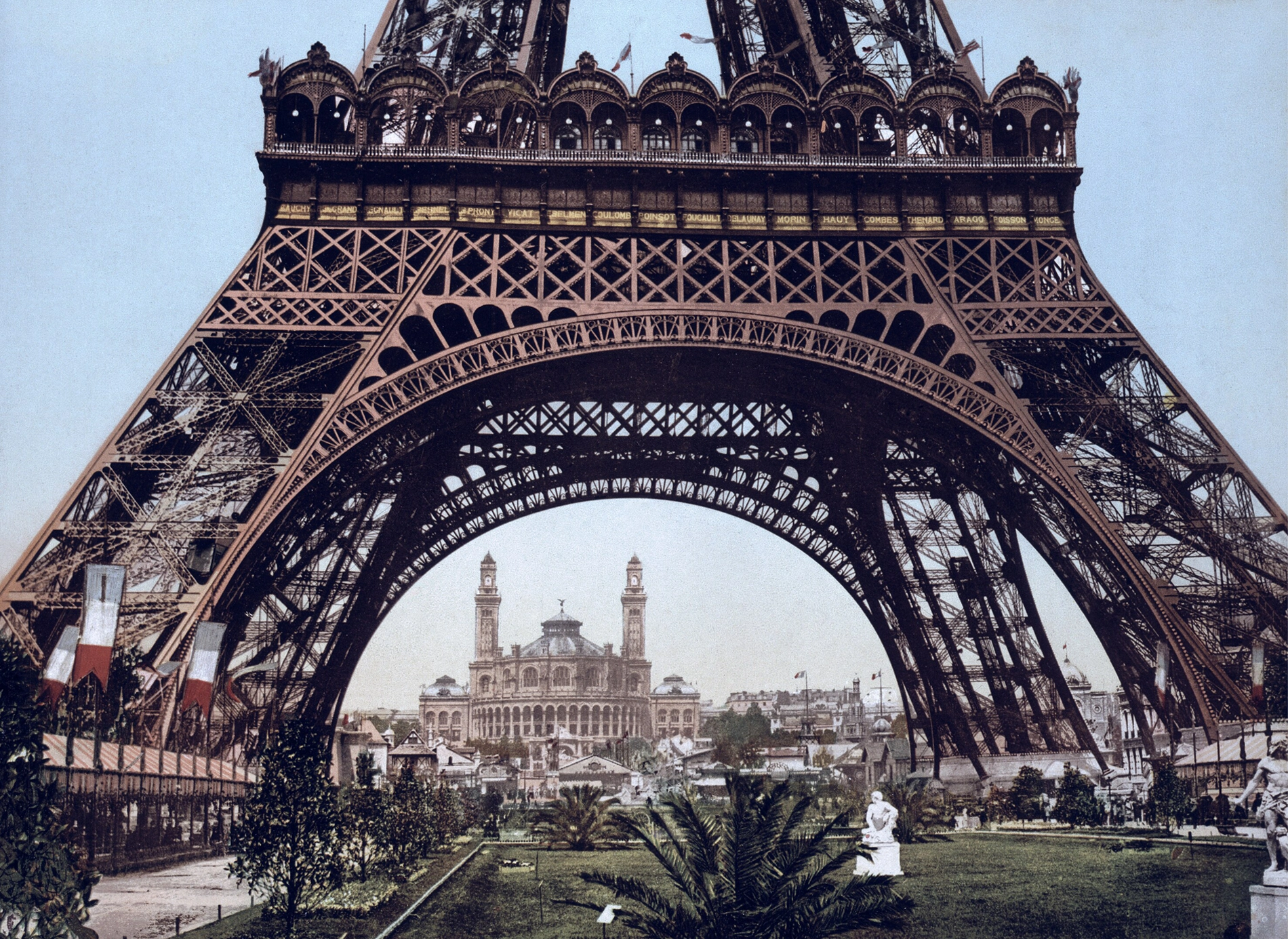The Eiffel Tower and Gustave Eiffel (1889)
Gustave Eiffel designed the tower as a demonstration of French expertise in metal construction. Its fully riveted structure, lightweight despite its height, showcased the precision of late 19th-century French engineering. Inaugurated for the 1889 World’s Fair, the Eiffel Tower immediately became a symbol of modernity.
A lively first floor shaped by Art Nouveau
When it first opened, the first floor hosted restaurants, panoramic lounges and covered galleries. Photographs dated between 1899 and 1905 show the appearance of metal arcades with curved lines characteristic of Art Nouveau, generally attributed to Stephen Sauvestre. These arches gave the level an elegant and instantly recognizable silhouette, now completely gone.
Progressive transformations during the 20th century
Throughout the 20th century, the first floor was modified to improve circulation, strengthen the structure and meet public needs. The original pavilions and the features added around 1900 progressively disappeared, especially during the 1930s reorganization and later contemporary renovations. The current level preserves none of these historical elements.
An aesthetic now lost
Archives show a first floor that was far more refined than today: curved metal arches, regular openings and an openwork structure typical of Sauvestre’s interventions. These features, once essential to the visual identity of the monument, have now completely vanished.
The Eiffel Tower bookend
Our design recreates the curved metal arcades of the first floor around 1900, as well as the original openwork structure—simplified yet faithful in proportions. The bookend evokes the historic appearance of the monument before the major transformations of the 20th century.












